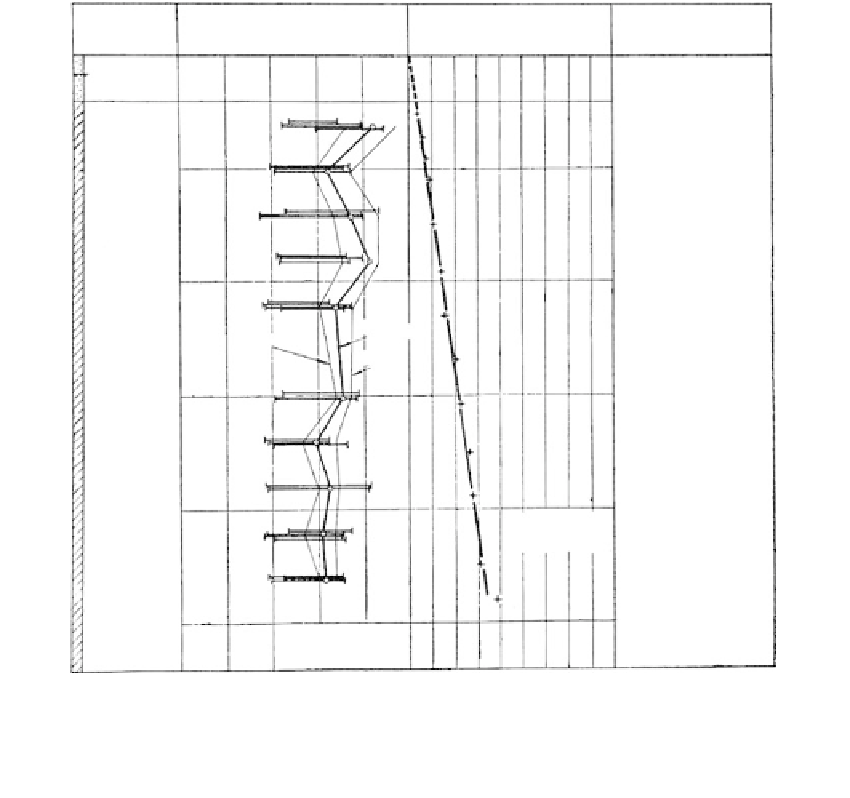Environmental Engineering Reference
In-Depth Information
Shear strength ( t/m
2
)
Description
of soil
Water content (%)
Average values
10
20
30
40
12345678
0
Silty clay
weathered
5
= 1.88 t/m
2
PL = 17.4%
S
t
= 7
W
= 37.7%
LL = 37.7%
c/p = 0.165
10
Soft clay
homogeneous
W
average
W
max.
W
min.
15
PL
LL
20
+ vane tests
25
LL = Liquid limit
PL = Plastic limit
Depth
(metres)
FIGURE 7.102
Properties of Norwegian glaciomarine clays at Drammen. (From Bjerrum, L.,
Geotechnique
, 4, 49, 1954. With
permission.)
ironstone, or ferrocrete (iron-rich); bauxite (alumina-rich); calcrete or caliche (lime-rich); or
silcrete (silica-rich).
Laterites
Distribution
Laterites extend over very large areas in tropical regions and are found in Brazil, Thailand,
India, and central Africa.
Description
In the advanced state of formation, laterite, a residue of hydrous iron and aluminum
oxide, is an indurated reddish-brown rock-like deposit, which can develop to several feet
or more in thickness, as shown in
Figure 7.105.
The true rocklike laterites have been
defined as having a silica-sesquioxide ratio of less than 1.33
(Section 7.2.2).
In some coun-
tries it is referred to as ferrocrete because of its hardness.
Formation
Laterites occur only in residual soils rich in iron and aluminum. Several basic conditions
are required for their formation: basic ferromagnesian rocks; a hot, moist climate with


